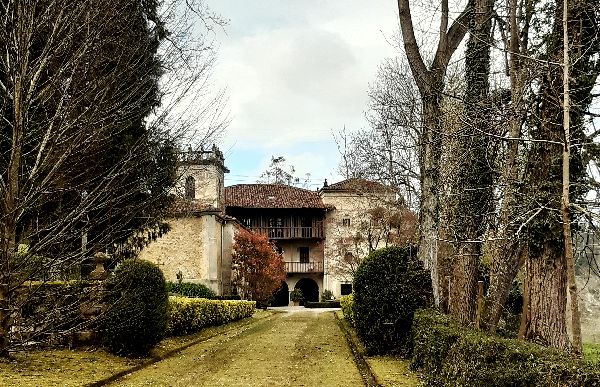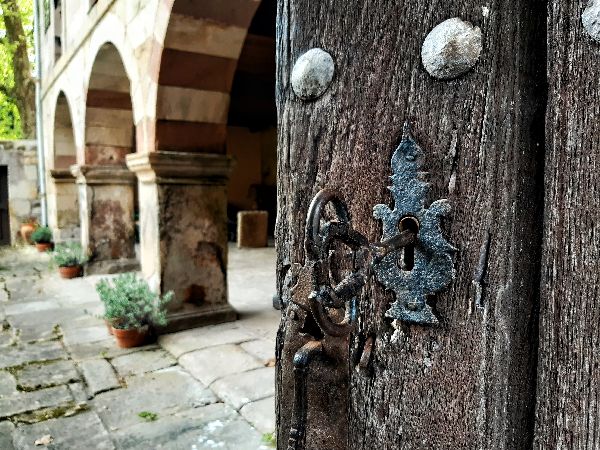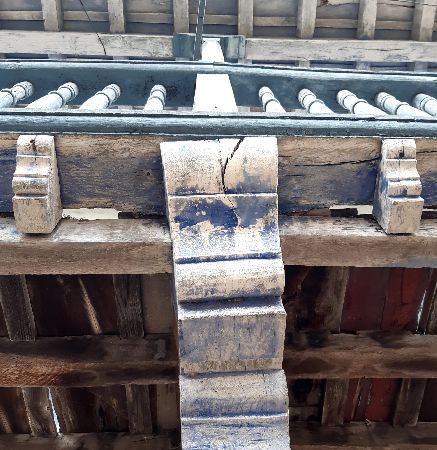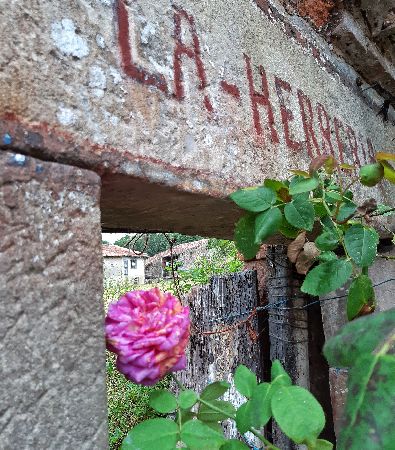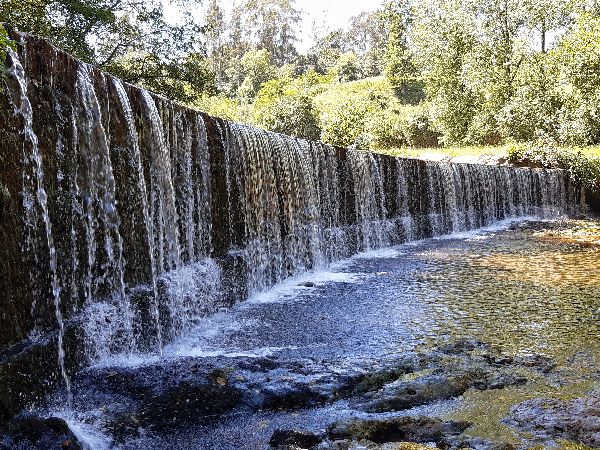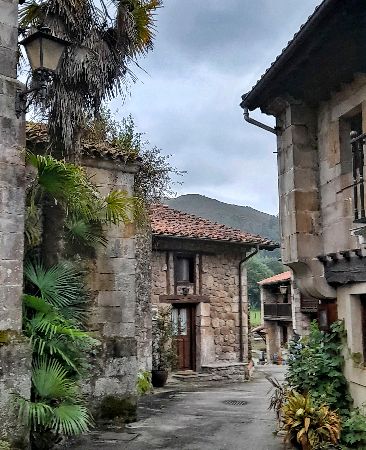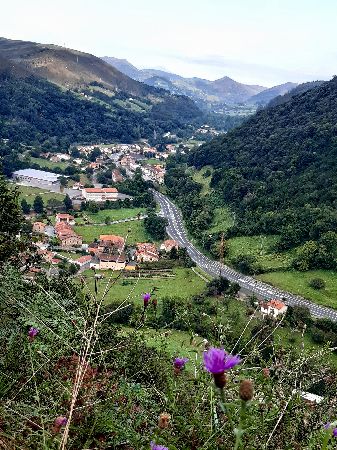Valdáliga

 Download the cheat sheet and go!
Download the cheat sheet and go!
|
The Cantabrian Sea and the Sierra del Escudo de Cabuérniga are the natural north-south limits of the municipality of Valdáliga. It’s comprised of the villages of Caviedes, Labarces, Lamadrid, Roiz, San Vicente del Monte, El Tejo and Treceño. In Valdáliga you can enjoy the sea in Oyambre Beach, bird watch in the estuaries, go surfing or play golf. You can explore the underground world of El Soplao or the mountains with routes like the Llasca and the Cambera de los Moros. You can learn about our culture through our bowling and the livestock fairs. And if you add kilometers of scenic routes that you can travel by car or on bike, it’s the perfect plan. Do you want to come to Valdáliga? The Escudo River passes through the territory, and it gets its name from the medieval “Val de Allega.” The oldest inhabitants that lived on this land date back to Prehistoric times. Engravings and remains from this time period have been found in caves and shelters in Roiz. During the Middle Ages and the Early Modern Period, stately families like the Cevallos family (spelled with V) and the Guevara family were quite prominent. Emigration to America was common in the 17th and 18th centuries. Those who became wealthy abroad ordered grand houses and mansions to be built, which we can now find all over the municipality. Valdáliga is the birthplace of many well-known people in different parts of the world: Brother Antonio de Guevara, Juan de Herrera and Brother Silvestre Vélez de Escalante. We’ll tell you more about their lives later. The cultural traditions are another of its main attractions. Bowling, a par excellence rural sport, has given us great figures like Calixto García or Tete Rodríguez. In Valdáliga, there are several bowling teams, traditional bowling alleys in the villages and even an indoor bowling alley where competitions are held. Livestock fairs and contests bring together folklore, craftsmanship, fine cuisine and native cattle like the Tudanca breed. Two festivals take place in Treceño: San Bernabé on June 11th and San Martín on November 11th. After giving you a few broad brushstrokes of Valdáliga, we’ll reveal the ESSENTIALS and EXPLORING sections:
Natural Parks are places that are meant to protect the flora and fauna. Oyambre Natural Park is nearly 6,000ha in size (about 6,000 football fields) and it’s divided into different areas: the coast with cliffs, beaches and estuaries; meadows; and the forest. The territory occupies parts of Monte Corona, the La Rabia estuaries (shared with Comillas), the Zapedo (or Capitán) estuary and part of Oyambre Beach (shared with San Vicente de la Barquera). The estuaries and the beach are unique places to do some bird watching. And if you come at the end of August or beginning of September, you can see the migratory arrivals from northern Europe. The beach is also perfect for swimming and surfing.
In Bustriguado, at the foot of the Sierra del Escudo de Cabuérniga, you’ll find a natural marvel: the Llasca de los Moros. It’s a diagonal stone wall that the Bustriguado stream flows down. At first sight, it looks like a man-made wall, but it’s not. Mother Nature was the engineer of this captivating corner. To get to the Llasca, you should park in the small village square and follow the forest trail in front of you. About 500 meters away, take the detour to the left which crosses the river twice. After crossing the second bridge and going uphill a steep area, a sign will point out the way. Once you reach a cabin, the wide path ends and it becomes a trail. Always walk along the beaten track to avoid further damaging the area. Soon you’ll see some stairs that go down to the lookout of the Llasca. Technical information and recommendations: ► Starts and ends: Bustriguado Notes:
The Corona Group is a group of ten forests, including Monte Corona, and which belongs to several municipalities. Its vegetation is a mix of native tree species like oaks, beeches, chestnuts and ashes with foreign species like eucalyptuses, pines and sequoias. The easiest access point from Valdáliga is through Caviedes. A road will lead you to the first of the chapels within Corona: San Antonio hermitage, built in the 18th century. Every June 13th, the day of San Antonio, the neighbors in Caviedes and the surrounding villages take the Saint up to the chapel in a procession. After mass, lunch is served in the countryside accompanied by traditional music. During lunch, tickets are sold for the raffle of “El Rosco,” a cake that the lucky ticket holder gets to take home. The other 2 hermitages are Santa Cruz, of which hardly any remains are left due to looting, and San Esteban, in Comillas, which has amazing panoramic views.
The municipalities of Herrerías, Rionansa and Valdáliga share a subterranean world: the El Soplao cave. At the beginning of the 20th century, a group of miners discovered El Soplao while they were looking for zinc. Its geological richness is its greatest attraction. The cave is covered in speleothems like stalactites, stalagmites, flowstones and columns, although the eccentric ones are the most striking and amazing. There are 3 types of tour visits:
In the 9th century, the tomb of Santiago (St. James) was discovered in what was known as Libredón forest, in the northeast of the Iberian peninsula. A church was founded which the first pilgrims began to visit. In the 11th century it was solidified as a pilgrimage center at a European level. It’s often said that there are as many routes as there are pilgrims, which is completely true. It doesn’t matter which route you take, the destination is is what’s important: Santiago de Compostela. Throughout time, several main routes that we know today were developed, like the Primitive, the Portuguese, the Silver, the English, the French and the Northern Ways. The Northern route goes along the whole region, passing through the municipalities of Alfoz de Lloredo, Ruiloba, Comillas, Valdáliga, San Vicente de la Barquera and Val de San Vicente. Every year, thousands of pilgrims from all over the world pass through Saja Nansa on their way to Santiago de Compostela.
Near San Vicente del Monte, you’ll have the chance to walk a trail that has been transited for centuries. In the area of Birruezas is the start of the uphill climb to the summit of the Escudo via Cambera de los Moros, some large sandstone slabs that go up in a zig-zag. Its purpose was to connect the coast and the interior. We know that it was used until the opening of the Camino Real through Treceño in the 15th and 16th centuries; therefore, it dates back to the Middle Ages. Through lots of hard work and cleaning efforts, around 1,600 meters have been recovered, on which you can still see the footprints from the use of pack animals. The track is circular, although you could just go up until the Cambera and return taking the same way back. Once you reach San Vicente del Monte, in the center of town you’ll see a series of contraptions and panels that explain the Cambera. From here, there are few signs, so we suggest downloading the route on your phone beforehand. You have to exit the village by heading west towards the area of Birruezas. About 3 kilometers away, you’ll see a sign indicating the trail and where a 2-kilometer uphill climb begins. After walking for 1 kilometer, you’ll come across the Cambera. It’s almost impossible to imagine how they were able to build such a colossal piece of work. If you decide to continue up to the top, the views will surprise you: Picos de Europa (Peaks of Europe), the sierra of Peña Sagra, Carmona and kilometers of the coastline! To do the circular route, you should go atop the summit eastward until you reach the Cross. In July, the La Cruz festival takes place, which is celebrated with a mass and an outdoor dance in the village. Continue for 2.5 kilometers until you start to go downhill to return to San Vicente del Monte. Technical information and recommendations: ► Starts and ends: San Vicente del Monte Notes:
Emperor Carlos V was one of the most well-traveled kings, as has been documented by the chroniclers who accompanied him. His journeys are part of The Cultural Routes of the Council of Europe and can be found under the name: The European routes of Emperor Carlos V “Itinera Carolus V Imperator.” Under the section of Cultural Routes of Spain is where you’ll find Prince Carlos’s first trip from 1517, during which he crossed the Saja Nansa region. After the death of his grandfather Fernando the Catholic, he had to travel to the Iberian peninsula from Flanders to take possession of his lands as heir. This first trip was truly an odyssey: a fierce storm in the Cantabrian Sea caused the expedition to be split into two parts. The ship on which Prince Carlos was traveling, along with others, ended up in Tazones, on the Asturian coast. This is the start of a long journey to Mojados (Valladolid). He passed through the municipalities of Val de San Vicente, San Vicente de la Barquera, Cabezón de la Sal, Ruente, Cabuérniga and Los Tojos. They also spent the night in various towns in the region like San Vicente de la Barquera, Treceño, Valle de Cabuérniga and Los Tojos. The journey was recorded by his chronicler Laurent Vital which we’ll leave you with here: chronicler Laurent Vital
The architecture in Valdáliga mixes mansions and baroque palaces that belonged to lords and Indianos and rows of traditional mountain homes that are typical in rural areas.
Emigration to America during the 17th and 18th centuries caused a big change. Emigrants who achieved wealth abroad (known as Indianos), ordered large houses, mansions and churches be built in their native villages. That’s the main reason why there are so many buildings from that time period. Although there are several, we’re going to highlight a few of them:
They are all private property. When it comes to the rural architecture, we recommend wandering around the villages of the municipality where you’ll see the traditional mountain homes set in rows and facing south-southeast in order to take advantage of the sunlight.
Bowling is a rural sport that is mostly played in Cantabria. There are different categories of bowling like “bolo pasiego,” “pasabolo” and “bolo palma,” which is the most common. The players form bowling teams that play in different leagues and competitions regulated by the Cántabra Bowling Federation. The key elements are: the bowling alley, the pins, the balls and, of course, the bowlers. There’s several important bowlers in Valdaliga as Tete Rodriguez y Calixto García.
|





